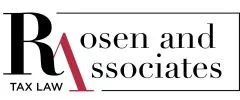- within Tax topic(s)
- with readers working within the Retail & Leisure industries
- with Senior Company Executives, HR and Finance and Tax Executives
- with readers working within the Accounting & Consultancy, Technology and Property industries
A repeated question in the realm of taxation revolves around the nature of expenditures; whereby misunderstandings arise as to whether an expense incurred by a taxpayer is classified as a capital expenditure or as a current expenditure. This distinction is crucial for tax purposes, as it determines how expenditures are reported in financial statements and tax returns. Each type of expenditure plays a distinct role in financial management and strategic planning. Since the Income Tax Act ("ITA") does not provide much, if any, guidance between the distinction between a current or capital expenditure, this article seeks to explain the differentiation between the two types of expenditures.
Current Expenditures
Current expenditures generate income primarily in the current taxation year, rather than in future years. These expenditures can be immediately deducted from income. Some examples of current expenditures include:
- Employee salaries and benefits;
- Recreation, meal and entertainment expenses;
- Interest expenses; and
- Travel expenses.
Capital Expenditures
On the other hand, capital expenditures are intended to produce income primarily in future taxation years, rather than the current year. The deduction of capital expenditures is limited. Some capital expenditures can only be deducted over time through capital cost allowance ("CCA"), while others may not be deductible at all. Some examples of capital expenditures that can be deducted over time through CAA include:
- Costs of constructing a building; and
- Certain equipment expenses.
Conversely, a capital expenditures that cannot be deducted at all includes the cost of land (in most cases).
Subsections 18(1) and 20(1) of the ITA outline specific circumstances where deductions for capital expenditures are permissible, typically through CCA.
The CRA Income Tax Folio S3-F4-C1 and Income Tax Regulations ("Regulations") 1100-1107 specify which capital expenditures are eligible for CCA and which are not entitled to any deduction. Further, the guidelines discussed in sections 1.4 to 1.12 offer further clarity on the CRA's perspective regarding expenditures on existing properties. These considerations include:
- Enduring benefit;
- Maintenance or capital improvement;
- Integral part or separate asset;
- Relative value;
- Readying a used property for rental or other use; and
- Anticipation of sale
Eligibility for CCA
For capital expenditures to qualify for CCA, they must meet four criteria:
- The expenditure must fall within one of the property classes listed in Schedule II of the Regulations (there are over 50 classes of property).
- The taxpayer must have acquired the property, possessing sufficient ownership rights such as possession, use, and risk, even if legal title is not acquired.
- The property must be "available for use" whereby "movable" property is available upon delivery, while "immovable" property, like buildings, are available once construction is complete.
- The property must not be excluded by Regulation 1102.
Legal Test for Determining if a Payment was a Capital or Current Expenditure
The Supreme Court of Canada's decision in Canada v Johns-Mansville Corp (1985), provided a multi-factor test to differentiate between a capital or current expenditures. In this case, Johns-Mansville Corp owned an open-pit mine which they would dig deeper and deeper into each year. As the mine became deeper, the road network within needed to become wider. To allow for this, Johns-Mansville Corp would annually purchase land surrounding the perimeter of the open-pit mine. The land purchased didn't contain ore, however, most of the purchased land was cleared away so that a more gradual slope could be created. Johns Mansville Corp deducted the cost of the land acquisitions as a current expenditure. The Ministry of National Revenue denied this expenditure on the grounds that cost of land was a capital expenditure.
Canada v Johns-Mansville Corp identifies some questions that point to what capital expenditures are, including:
- Whether payments are recurring rather than being "once and for all";
- Whether the expenditures produced are only for a transitional benefit; one that has no enduring value;
- Whether the expenditures are relatively constant;
- Whether the expenditures are a small or large part of annual expenses (capital expenditures are often large); and
- Whether the purpose of the expenditure to remove a current obstacle of the taxpayer's business operation.
Conclusion
The distinction between capital and current expenditures is vital for tax reporting and financial planning. While the ITA may lack specific guidance, case law and CRA guidelines offer valuable insights for taxpayers. In understanding capital cost allowance eligibility and the legal tests for the distinction between capital and current expenditures, a taxpayer can make more informed decisions.
The content of this article is intended to provide a general guide to the subject matter. Specialist advice should be sought about your specific circumstances.



